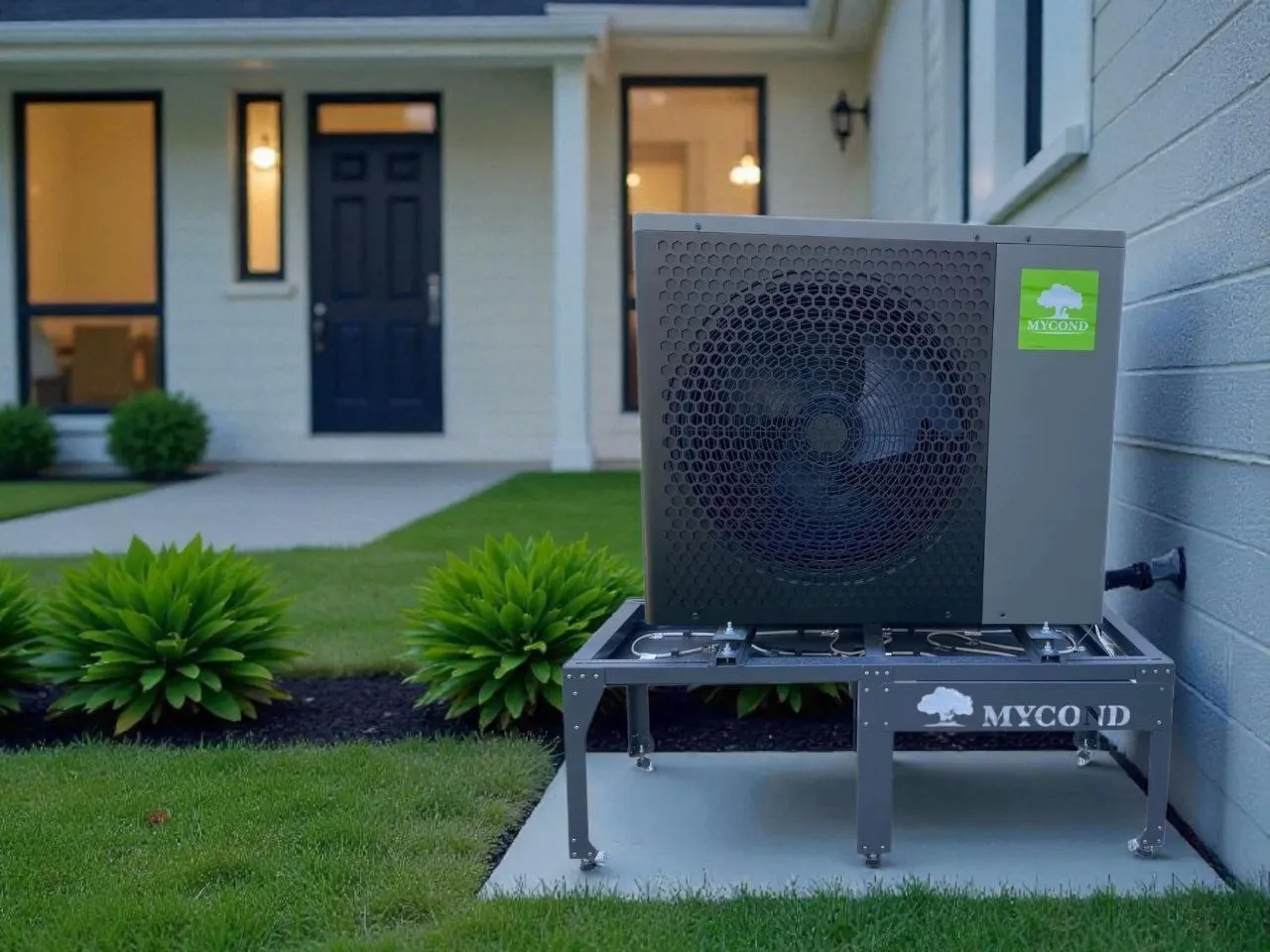
The owner of a private 150 m² house, Michael from Berlin, has spent the last few months on calculations and comparison charts. His gas boiler has reached the end of its life, and gas tariffs are rising every year. In parallel, during the summer months he has to install mobile air conditioners — which means extra expenses and constant discomfort. A neighbor recently installed a heat pump and boasts about how it’s “eco-friendly and economical,” but is this technology really that effective?
Michael is studying engineering calculations, comparing a heat pump with a gas boiler, and the main question remains open: which system is truly more efficient from an engineering standpoint, taking into account various operating factors and climate conditions?
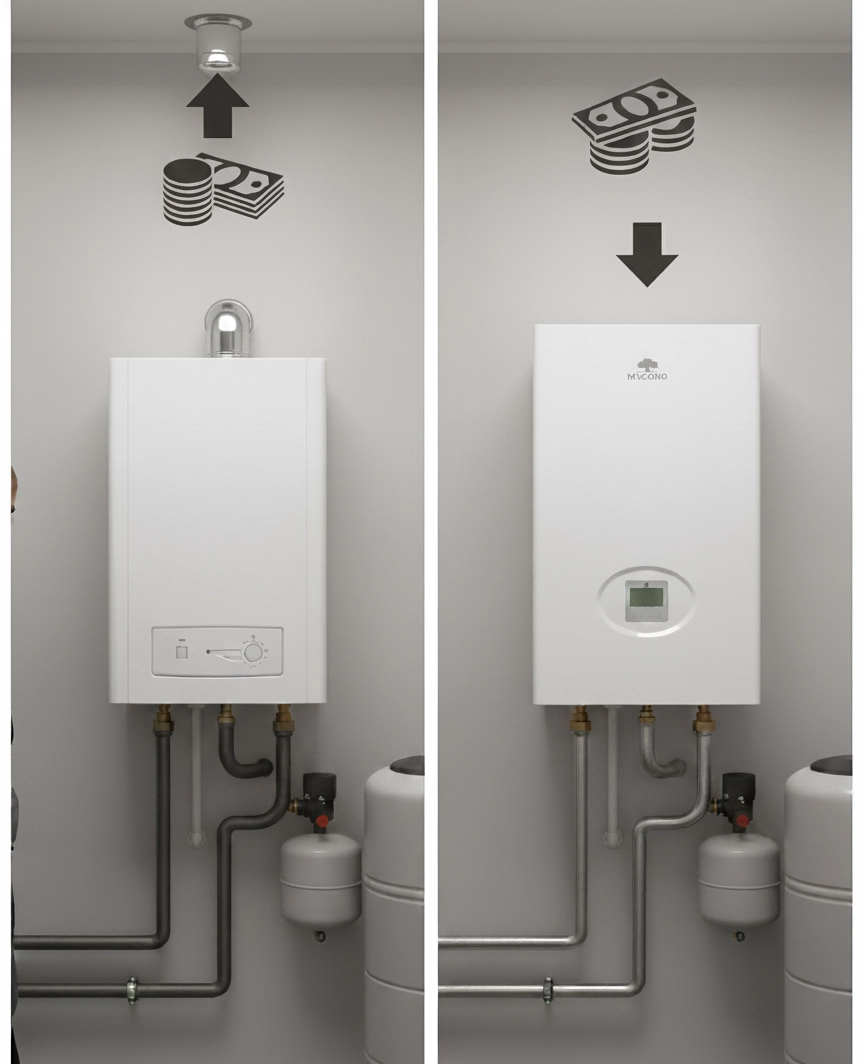
How both technologies work: basic principles
Gas condensing boiler
A gas condensing boiler is an enhanced version of the traditional gas boiler. It operates by burning natural gas to produce thermal energy. The key feature of condensing boilers is their ability to utilize the latent heat of water vapor condensation contained in the exhaust gases.
Advantages:
- High efficiency: up to 98% (versus 80–85% in traditional boilers)
- Mature, proven technology with high output
- Operates with stable efficiency regardless of outdoor temperature
Disadvantages:
- Continuous dependence on gas supply
- Requires regular maintenance and flue inspection
- CO₂ and other combustion emissions
- No cooling function
Air-to-water heat pump
An air-to-water heat pump works on a principle similar to a refrigerator but in reverse. It extracts thermal energy from the ambient air and transfers it to the building’s heating system.
Key performance indicators:
- COP (Coefficient of Performance) — a ratio of produced thermal energy to consumed electrical energy. For example, a COP of 4.0 means the system produces 4 kW of heat from 1 kW of electricity.
- SCOP (Seasonal Coefficient of Performance) — the seasonal efficiency measured over the entire heating season.
Advantages:
- High energy efficiency (COP from 2.6 to 5.0 depending on conditions)
- Independence from gas supply
- Cooling function in summer
- Minimal CO₂ emissions during operation
Disadvantages:
- Efficiency decreases at very low temperatures
- Higher initial cost compared to gas boilers
- Requires proper design and capacity sizing
Methodology for a technical efficiency comparison
For an objective comparison of heating systems, it’s important to consider climate conditions, so let’s review three typical European zones:
- Temperate climate: London, Paris, Amsterdam (rarely below -5°C)
- Cool-temperate climate: Berlin, Warsaw (winter temperatures down to -15°C)
- Cold climate: Stockholm, Helsinki (frequent temperatures below -20°C)
Key parameters for evaluation:
- COP of the heat pump at different operating points:
- A7/W35 (air +7°C, water supply +35°C) — standard measurement point
- A-7/W35 (air -7°C, water supply +35°C) — critical point for cold climates
- Efficiency of the gas boiler (condensing vs conventional)
- Seasonal efficiency (SCOP vs average annual efficiency)
Efficiency comparison at different outdoor temperatures
| Outdoor temperature | Heat pump (COP) | % change in heat pump efficiency | Gas boiler (efficiency) | % change in boiler efficiency |
|---|---|---|---|---|
| +10°C | 5.2–5.5 | +10% | 95–98% | 0% |
| +7°C | 4.4–4.9 | 0% (baseline) | 95–98% | 0% |
| 0°C | 3.8–4.3 | -12% | 95–98% | 0% |
| -7°C | 2.7–3.1 | -35% | 95–98% | 0% |
| -15°C | 2.4–2.8 | -45% | 95–98% | 0% |
| -25°C | 2.0–2.6 | -55% | 95–98% | 0% |
As we can see, the efficiency of a heat pump decreases as the outdoor temperature drops, while a gas boiler operates with stable efficiency regardless of the weather. However, even at -25°C, modern heat pumps maintain a COP above 2.0, which means 200% efficiency compared to conventional electric heaters.
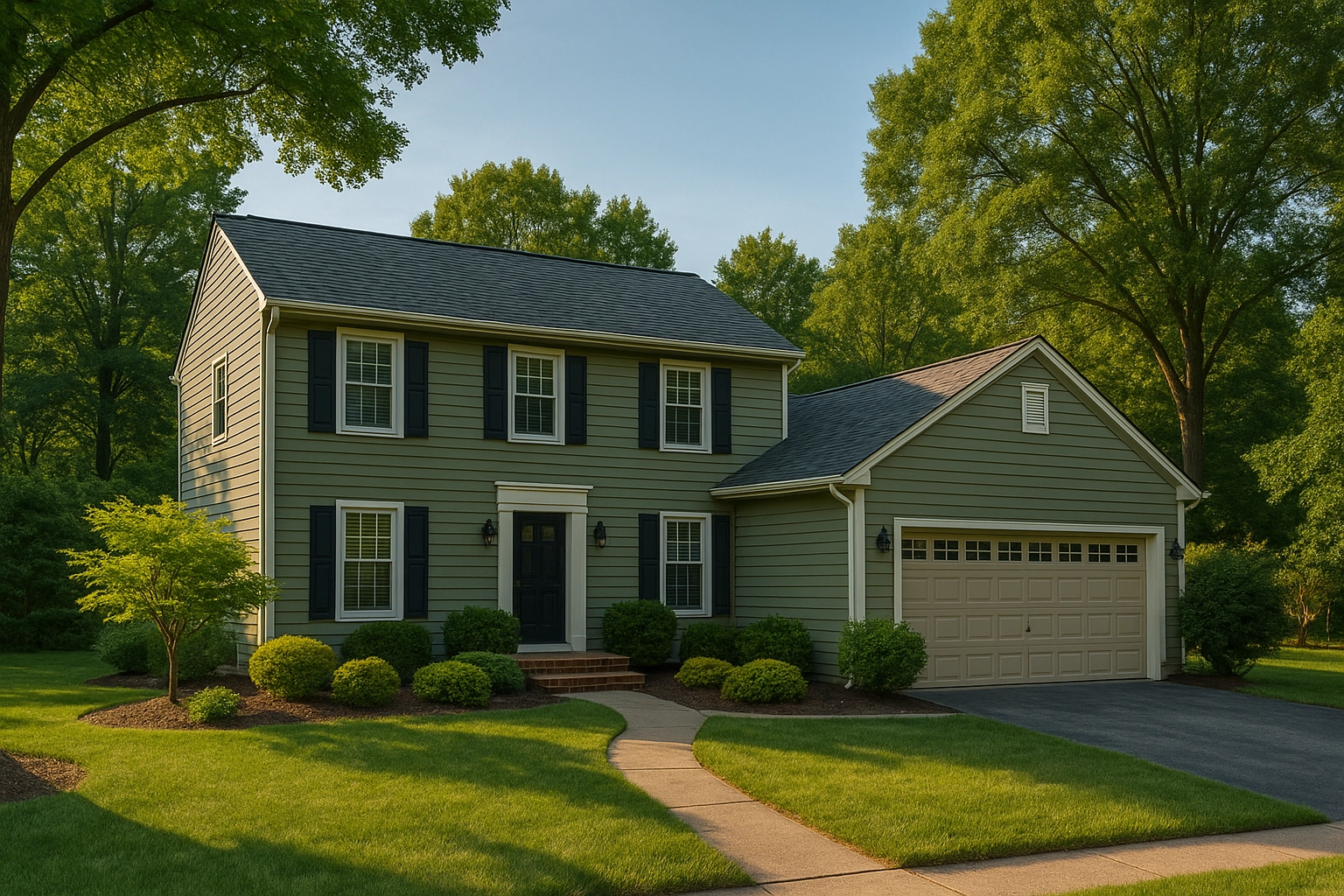
Technical specifications of Mycond BeeHeat heat pumps
The Mycond BeeHeat series features air-to-water split systems with inverter technology and the following models:
| Model | Heating capacity (kW) | COP at A7/W35 | COP at A-7/W35 |
|---|---|---|---|
| MHS-N6BH/U6BH | 6.0 | 4.89 | 2.94 |
| MHS-N8BH/U8BH | 7.9 | 4.51 | 3.05 |
| MHS-N10BH/U10BH | 9.7 | 4.62 | 3.1 |
| MHS-N12BH/U12BH | 12.1 | 4.51 | 2.7 |
| MHS-N14BH/U14BH | 14.3 | 4.61 | 2.7 |
| MHS-N16BH/U16BH | 16.2 | 4.41 | 2.6 |
General technical specifications of the series:
- Operating temperature range: from -25°C to +43°C
- Maximum supply temperature: up to +60°C
- Refrigerant: R32 (GWP 675, less harmful to the ozone layer)
- Energy efficiency class: A+++ (at W35) and A++ (at W55)
- Sound level: 42 dB(A) indoor unit, 58–68 dB(A) outdoor unit
- Power supply: 230/50Hz (up to 10 kW) and 400/50Hz (from 12 kW)
- Cooling mode: EER 2.45–2.94
Key technological solutions:
- Mitsubishi inverter technology: smoothly modulates compressor output according to demand, improving efficiency and extending equipment lifespan.
- Alfa Laval plate heat exchanger: ensures efficient heat transfer between the refrigerant circuit and the building’s heating system.
Checklist for choosing between a heat pump and a gas boiler
To choose the right heating system, consider the following criteria:
- Gas supply availability: Lack of a gas grid or high connection costs favor a heat pump.
- House size and heat losses: For buildings with low heat losses (up to 50 W/m²), heat pumps operate at maximum efficiency.
- Type of heating system: Low-temperature systems (underfloor heating, fan coils) allow achieving the maximum COP from a heat pump.
- Cooling demand: If summer air conditioning is needed, a heat pump has a major advantage because it can operate in cooling mode.
- Climate zone: In a temperate climate with rare frosts, a heat pump will operate efficiently throughout the heating season.
- Noise level: In dense developments, consider the noise characteristics of the heat pump’s outdoor unit.
- Environmental requirements: If low CO₂ emissions are a priority, a heat pump has a significant advantage over a gas boiler.
- Integration with a “smart home”: Modern heat pumps offer more flexible integration with automation systems.
- Power supply stability: Reliable operation of a heat pump requires a stable power supply or a backup energy source.
When it makes sense to choose BeeHeat: optimal use cases
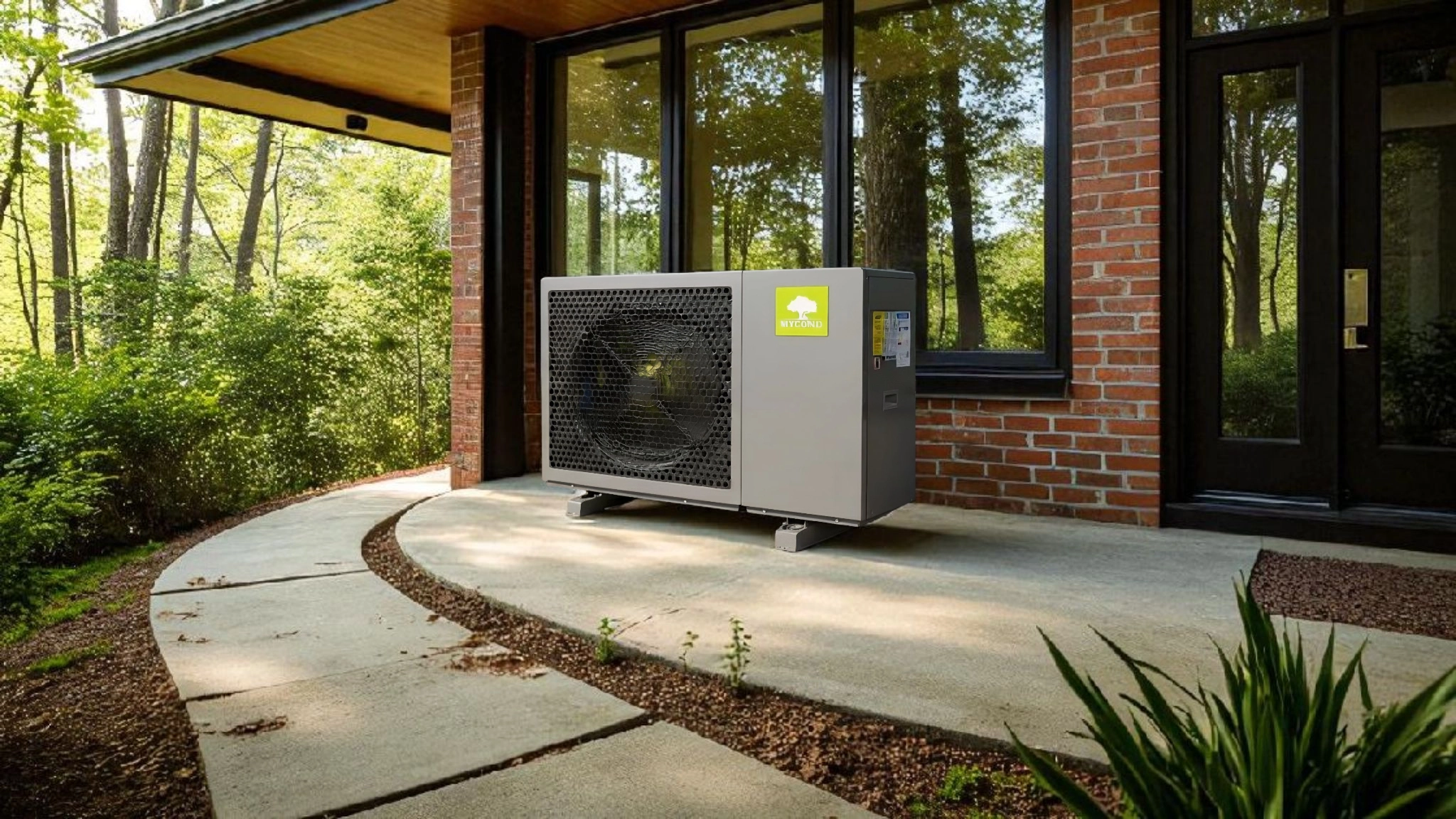
Mycond BeeHeat heat pumps are the optimal solution in the following cases:
- New builds with a low-temperature heating system (underfloor heating, fan coils). At a supply temperature of 35–45°C, a maximum COP of 4.4–4.9 is achieved, delivering the highest efficiency.
- Retrofit of an existing system with bivalent operation capability, where BeeHeat works alongside the existing boiler, which turns on only below the bivalence point.
- Homes with a need for cooling — thanks to the reverse function, the system can cool with an EER of up to 2.94, saving on a separate air-conditioning system.
- Regions with a temperate climate, where the average winter temperature is above -10°C, ensuring a high seasonal SCOP.
- Sites without access to a gas network or with high gas connection costs.
- Projects with high environmental requirements — energy efficiency class A+++, low CO₂ emissions, R32 refrigerant with a lower global warming potential (GWP 675).
An important feature of BeeHeat is the automatic switch-over to a backup heat source when the temperature falls below the efficient operating range, which increases system reliability during cold periods.
Alternatives in the Mycond lineup
In addition to the BeeHeat series, Mycond offers other heating solutions:
| Feature | BeeHeat | BeeEco |
|---|---|---|
| System type | Split system | Monoblock |
| Maximum supply temperature | up to +60°C | up to +75°C |
| Refrigerant | R32 | R290 |
| Energy efficiency class | A+++ (W35), A++ (W55) | A+++ (W55) |
| Optimal application | New projects with low-temperature systems | Retrofit of existing radiator systems |
When to choose the BeeHeat split system:
- When installation space is limited (compact outdoor unit)
- To reduce the risk of the heating medium freezing (refrigerant line between units)
- For low-temperature heating systems
When to choose the BeeEco monoblock:
- To simplify installation (no certified refrigerant installer required)
- For high-temperature applications (radiator systems)
- When stricter environmental requirements apply (R290 with a GWP of just 3)
Installation, operation, integration
BeeHeat heat pumps are split systems with an indoor hydronic module that includes:
- Shimge circulation pump
- 5 L expansion tank
- Alfa Laval plate heat exchanger
- Built-in electric heater for backup heating
Connection requirements:
- 230V/50Hz for models up to 10 kW
- 400V/50Hz for models from 12 kW
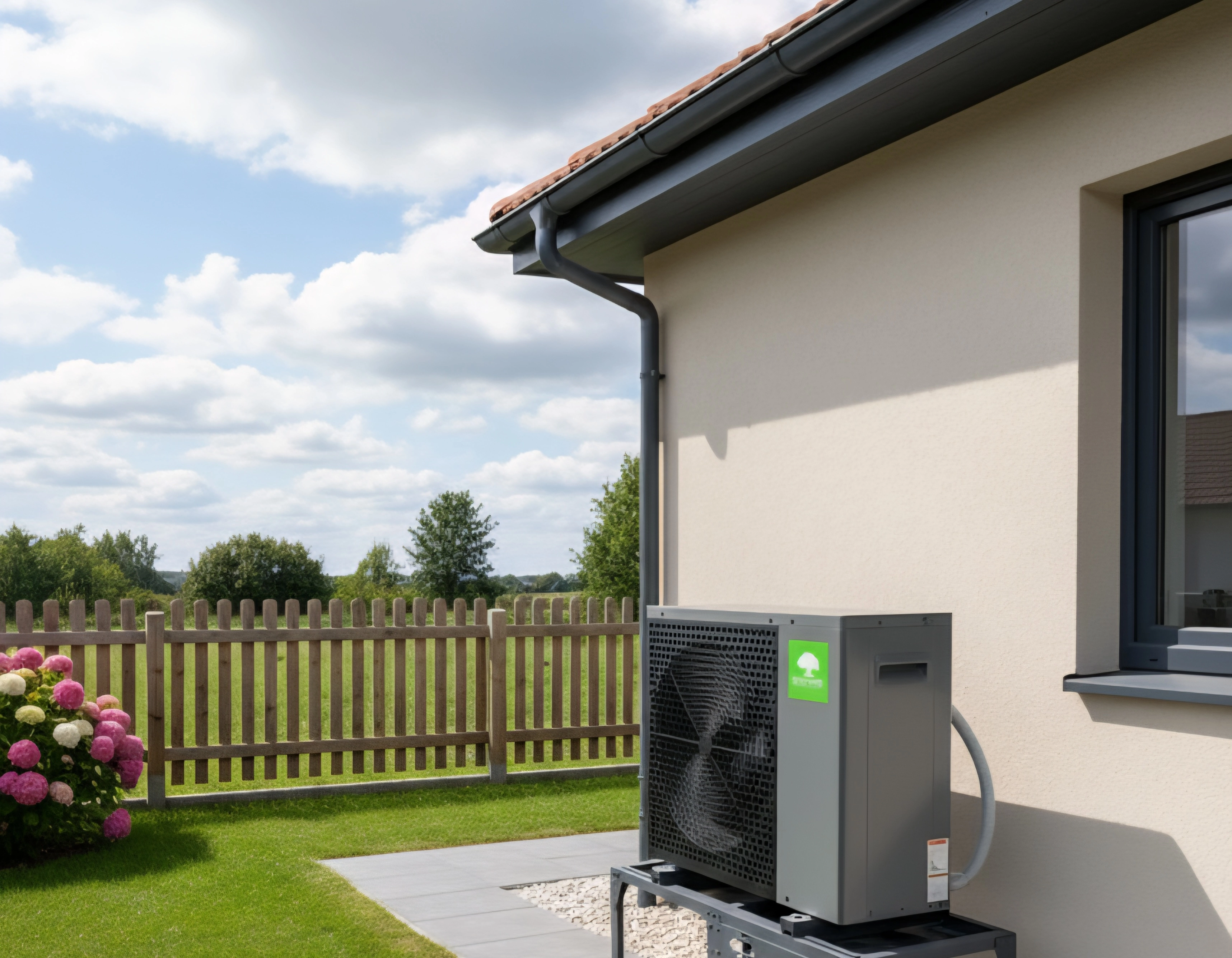
BeeHeat intelligent functions:
- Integration with the Mycond App for remote control
- Ability to connect a room thermostat
- Weather-compensated control
- “Night mode” with reduced noise
- Automatic defrost
- Antifreeze mode
- Ability to cascade up to 9 units for large sites
Maintenance comparison:
- Heat pump: minimal requirements, periodic inspections without complex procedures
- Gas boiler: mandatory annual service, heat exchanger cleaning, flue inspection, gas connection checks
Calculating the bivalence point
The bivalence point is the outdoor air temperature at which the heat pump’s efficiency drops to the point where it becomes more practical to use a backup heat source.
Example calculation for a cool-temperate climate (Berlin):
- Determine the COP vs temperature for the selected model (e.g., MHS-N10BH):
- At +7°C: COP = 4.62
- At -7°C: COP = 3.1
- At -15°C: COP ≈ 2.7 (approximation)
- Calculate the gas boiler efficiency (taking into account an efficiency of about 98%).
- Find the efficiency crossover point — when the COP drops to 2.2–2.5 (depending on tariff ratios), switching to a backup source is advisable.
- For Berlin, this corresponds to a temperature of about -15…-20°C.
The BeeHeat system has an automatic switchover to a backup source when the bivalence point is reached, optimizing energy consumption and ensuring reliable heating.
Frequently asked questions (FAQ)
Can the BeeHeat heat pump be used at -25°C?
Yes, Mycond BeeHeat heat pumps are designed to operate in the range from -25°C to +43°C. However, it’s important to understand that at very low temperatures the COP drops to 2.6–3.1, so for maximum efficiency in colder regions a bivalent scheme with a backup heat source is recommended.
What is BeeHeat’s supply temperature?
The maximum supply temperature of the BeeHeat series is +60°C, which is suitable for most heating systems, including low- and medium-temperature radiators, underfloor heating, and fan coils.
How much electricity does a heat pump consume?
Electricity consumption depends on the COP. For example, with a COP of 4.0, to obtain 4 kW of heat, the heat pump consumes 1 kW of electricity. Actual consumption depends on outdoor temperature, heat load, and system settings.
Is a backup boiler necessary?
For temperate regions (London, Paris, Amsterdam) a backup boiler is usually not required. For colder regions (Berlin, Warsaw, Stockholm), it is recommended to have a backup heat source for periods of very low temperatures. BeeHeat has an automatic switchover to the backup.
What is BeeHeat’s noise level?
The indoor unit operates at 42 dB(A), and the outdoor unit at 58–68 dB(A), depending on the model and operating mode. The system has a “night mode” with reduced noise for comfortable use in residential areas.
Can BeeHeat be used for cooling?
Yes, all models in the BeeHeat series have a reverse function and can operate in cooling mode with an EER of 2.45–2.94 in the temperature range from +8°C to +43°C.
Get a free expert consultation
Choosing the optimal heating system is a responsible decision that must take many factors into account. Mycond engineers will help you:
- Design the optimal heating system for your specific site
- Determine the bivalence point for your region
- Select the optimal BeeHeat model
A consultation with a Mycond technical specialist will help you make an informed choice and get maximum efficiency from your heating system.